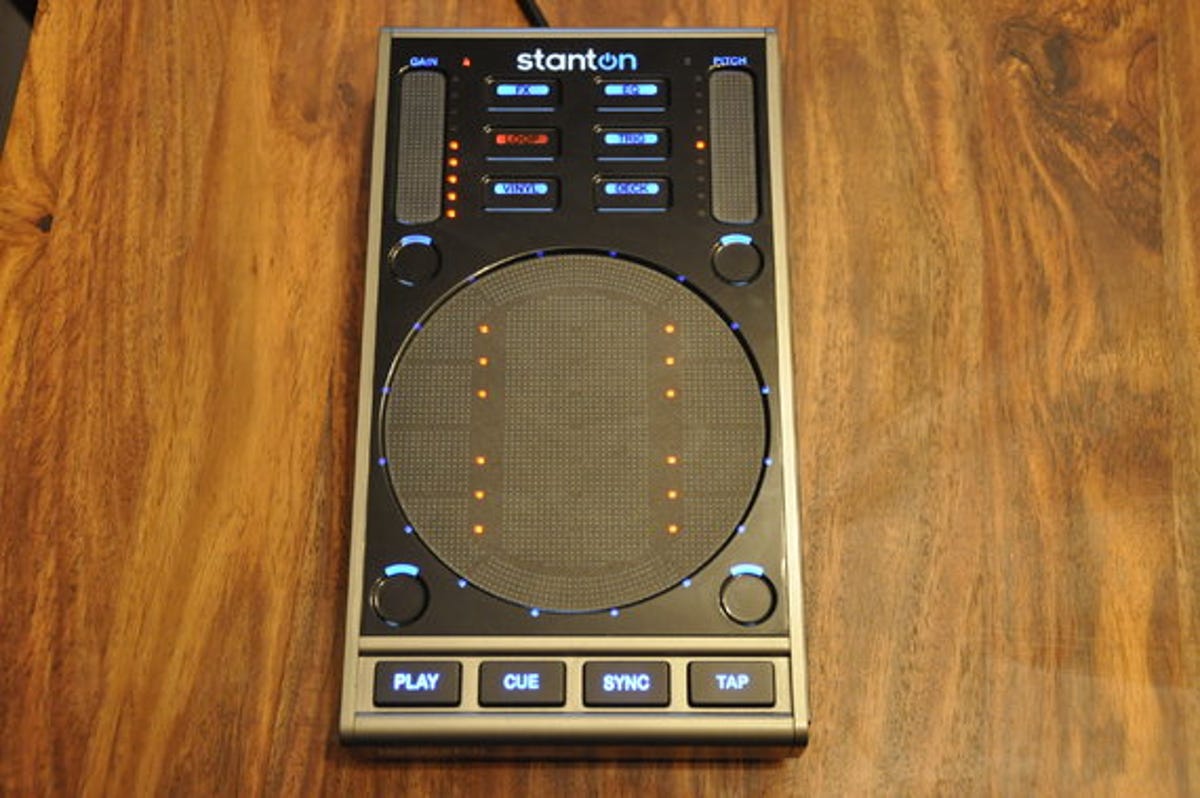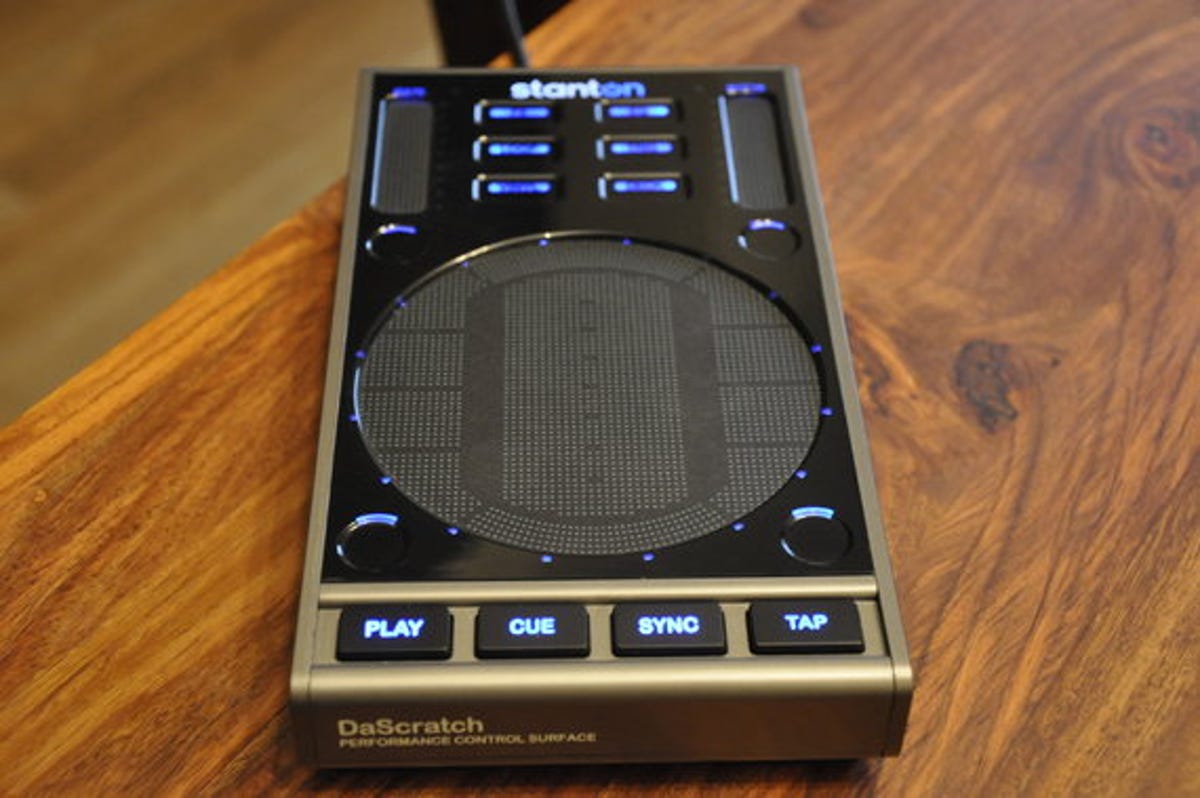
Here's the problem many wannabe DJs face: it's hella expensive to buy all the gear you need to start, but until you buy it, you don't know if you'll actually be any good. So if you're interested in spinning records for fun -- or profit -- you'll need to start somewhere.
DaScratch is Stanton's answer to the problem of cost. At just £180 it's a relative bargain, considering it doesn't require a mixer or a huge collection of vinyl records. You'll need some PC software to get started, but we'll get to that in due course. You'll also need some digital music, but we're pretty sure everyone has a pile of MP3s to hand in this day and age.
The unit itself is a pretty slick bit of hardware. Made out of tough plastic, it feels like it could manage to survive some serious nightlife. It operates over USB and uses a MIDI interface to communicate with your PC. We tested it with Traktor DJ Studio, which is one of our favourite pieces of DJ software, and ideal, because DaScratch works pretty much out of the box with it.
In order to pass the MIDI commands from the hardware to something like Traktor, you need a little bit of software called DaRouter. This is a free download from the Stanton Web site, and the key to making the whole thing work. As we were playing with DaScratch, it was this that caused us the most problems. That's not to say it was a difficult process, but something about our Vista install upset the software. The good news is the Stanton forums are very good, and people in the know are on-hand to help you with problems.
DaRouter can manage two DaScratch consoles, so if you want to go for the more DJ-like feel, you can. If you want to save money, DaScratch allows you to switch between decks at the touch of a button.
Once everything was sorted, we got everything fired up and off we went. Now, being rank amateurs in the DJ stakes, we wouldn't feel confident opening for Ferry Corsten, but we certainly managed to get Traktor to do its job with considerable ease.
We noticed that, despite its diminutive size and reasonably low price, DaScratch was fast and responsive to whatever button or pad we touched. Coupled with Traktor, it felt like we could, with practice, put together a respectable mix with one of these. We doubt you'd want to DJ in a club with one, but it's a great way to learn beat-matching without investing thousands in decks, only to discover you're a rhythm- and talent-free zone.
DaScratch is available now and costs around £180, but you'll need something like Traktor to make it do anything useful. Traktor Pro costs around £150, but there is a free trial available on the Native Instruments Web site.
